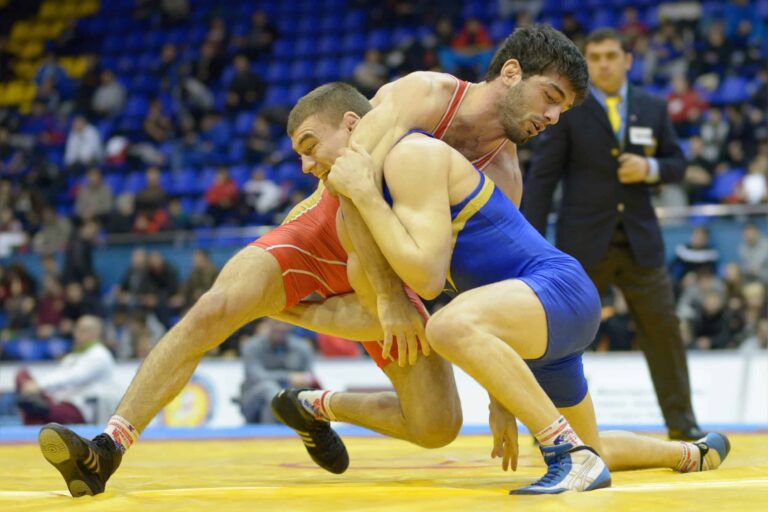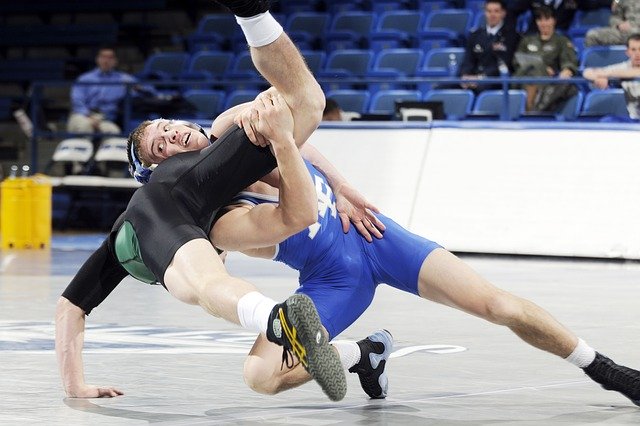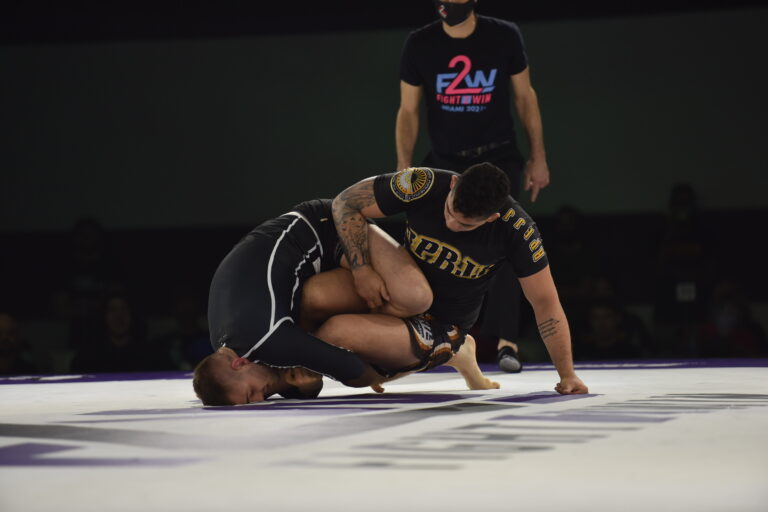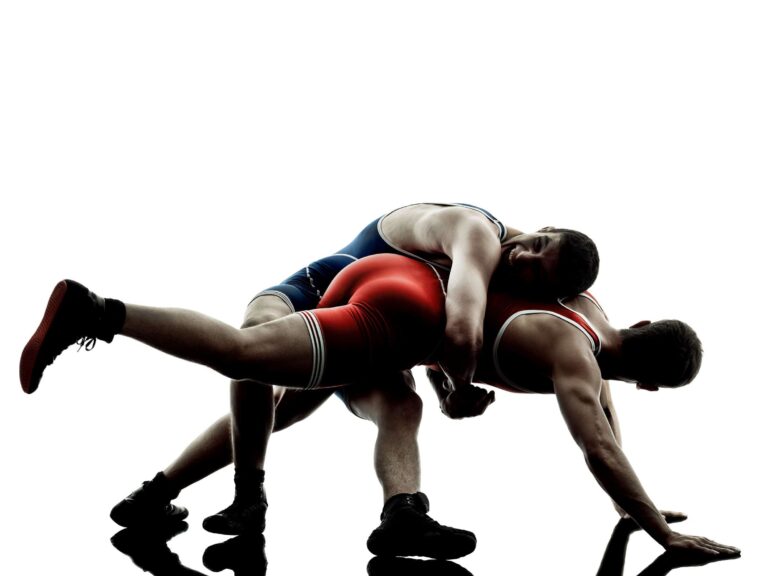What Are the Rules Of High School Wrestling?
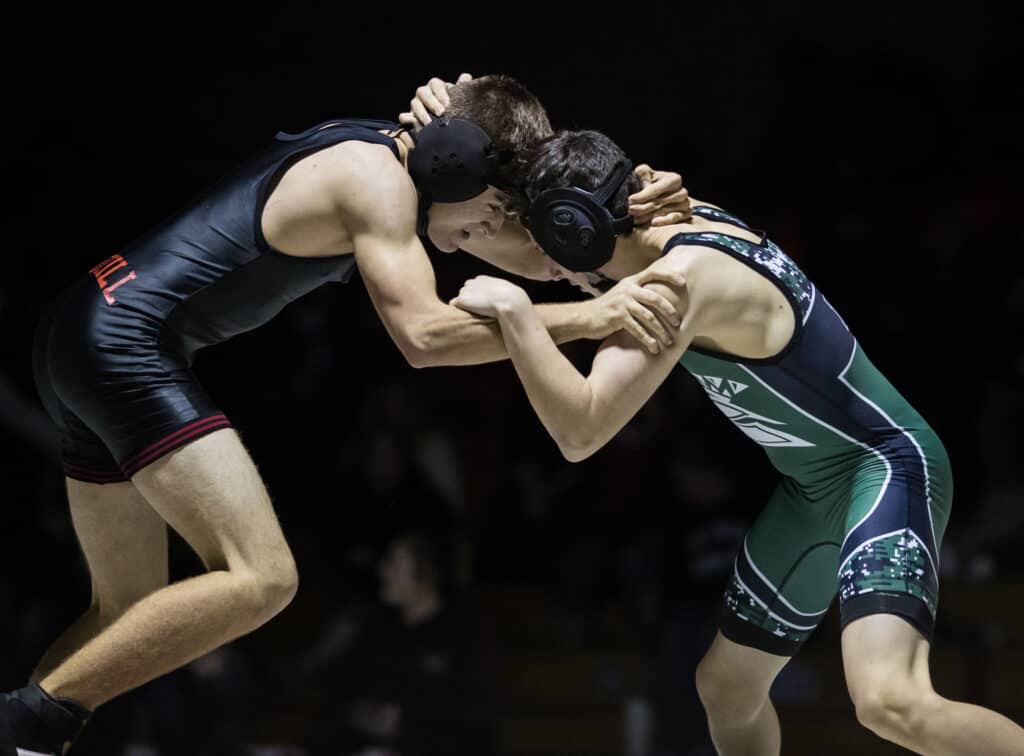
In the US we practice folkstyle wrestling or scholastic wrestling in middle and high school. Before you or your child begin it is important to know the rules in high school wrestling. Though the rules of high school wrestling are simple they do take time to learn.
The rules of high school wrestling state that proper attire must be worn, and both competitors must officially make weight. During the match, both wrestlers must try to secure a win via pin. If no pin is achieved, the match is scored according to points. Misconduct may result in disqualification.
By the time you have finished this article, you will know everything there is to know about high school wrestling rules. Specifically, this article will:
- Break the different rules of mat wrestling up into their respective categories.
- Proper Wrestling attire.
- Proper mat conduct.
- The scoring system.
- The weight classes.
- You will learn the objective rules for every facet of high school wrestling in their most up-to-date standing as per the NFHS.
High School Wrestling Match Rules
Those new to wrestling may find themselves confused with what they observe when two wrestlers are engaged in a competition and will have two immediate questions:
- What is the goal that the athletes are trying to accomplish?
- According to what criteria is the match being scored and the rules enforced by the officials?
The following rules and scoring requirements covered in this article are in accordance with the NFHS (National Federation of High School Wrestling), which can be viewed in their complete and technical terms at the following link for additional context.
The Participants in the Match
The first thing to know about high school wrestling matches is that they consist of three periods that last two minutes in duration, for a total time of six minutes. While certain competitions may change the round time duration, depending on the age of the competitors and the rules of a particular state, the typical round length is two minutes.
Beyond the two competitors, every match has one main referee who possesses the final say on all matters of rule enforcement. In addition to enforcing the contest rules, the referee has the duty of signaling points scored or penalized, which allows the judge who is keeping the score to follow the action closely.
In some instances, there might be an assistant referee present whose job is to provide a second opinion in the event of controversy or legitimate dispute.
Matches also have a timekeeper standing by to ensure all rounds begin and end when they are supposed to.
The Point System and Scoring Criteria in High School Wrestling
Every wrestling match begins with both athletes standing on their feet, each with one foot on the starting line. When the referee blows the whistle to signify the start of the round, both wrestlers will tie up and immediately begin looking to set up a takedown or a throw.
A pin is defined by the act of putting an opponent on their back, with both shoulders contacting the floor, for two seconds. If you score a pin, the referee will declare the match over and declare you the winner.
The scoring system in wrestling is relatively straightforward, which is how a winner will be determined if either athlete scores no pin.
While both grapplers want to put the other on their back, the points are awarded during the following exchanges:
- A successful and controlled takedown is worth 2-points.
- If you escape your opponent’s control over you on the ground and regain a neutral position, you are awarded 1-point.
- If you not only escape from an opponent who has you in a position of dominance but reverse them and gain control over them, you will be granted 2-points.
- In the event of a near-fall, wherein you take your opponent down and put them on their back but do not maintain control long enough for the referee to declare it a pin, you will be given either 2 or 3-points.
- Lastly, the referee may decide to take 1 or 2-points from a competitor if they deem them to have committed a rule or conduct violation.
So, what are the rule violations in high school wrestling that can warrant a point deduction?
Mat Conduct Rules Violations
While the main referee has the discretion and authority to make calls as they see fit, they must follow an objective protocol when deciding if an instance of rules and/or conduct violation has been committed.
One of the most frequent things that a referee will take a point away from a wrestler for is equipment grabbing/holding, which can include pulling on the opponent’s singlet, sleeves, headgear, shoes, or other items.
Another common infraction is when wrestlers continuously step out of bounds and purposely leave the competition area to avoid being taken down or exchanging. Intentionally forcing an opponent out of the designated area is also grounds for a point deduction.
Wrestlers are also forbidden from wrapping their opponents up while on the ground but hugging them and locking their fingers together or overlapping their hands to form a grip-lock hold.
For the first two penalties, one 1 point is given to your opponent. For a third violation, the opponent is given 2 points at your behest. The next offense beyond this will result in complete disqualification.
A wrestler may also be disqualified at any time if their conduct is deemed to be excessive to the point it warrants a dismissal. While this is extremely rare, it would typically include something along the lines of disobeying the referee’s order or continuing to attack an opponent after the whistle. Blatant acts of disrespect can also result in an immediate ejection.
Illegal moves in high school wrestling include groin attacks, pinching, headbutting, scratching, eye-poking, biting, finger bending, and anything deemed to be excessively aggressive, such as spiking an opponent on their head or neck. Slamming is also illegal and unnecessary.
Rules Regarding High School Wrestling Athletic Attire
To maintain safety and allow the judges to assess the match clearly and impartially, strict rules must be followed regarding what the athletes are required to wear during competition and practice.
The NFHS rules for attire are as follows:
- A tight-fitting one-piece spandex singlet must be worn during the competition, which must be cut in such a way that the collar in front and back is no lower than the bottom of the armpit. If the singlet has manufacturer logos, they must be 2¼” or less dimensionally. In recent years, high schools are now allowing wrestlers to wear tight-fitting spats with shorts and a tight-fitting rash guard.
- Wrestling shoes must always be worn, and must be entirely flat without a raised heel. They must extend high enough up the leg to cover the ankles, and if they have laces, the laces must be taped down.
- Wrestling headgear, designed specifically for wrestling competitions, must be worn during competition.
These rules ensure athlete safety and a fair playing field for both athletes to compete on in one way or another.
Wrestlers are also permitted to wear other equipment, such as a mouthguard, a face mask, or a pair of knee sleeves, provided that the contest officials approve of it.
High School Wrestling Weight Classes
As it currently stands, there are 14 weight divisions at the high school level for both boys and girls wrestling.
| High school wrestling weight classes (Girls) | 101 ,109, 116, 123, 130, 136, 143, 155, 170, 191, 235 |
| High school wrestling weight classes (Boys) | 106, 113, 120, 126, 132, 138, 145, 152, 160, 170, 182, 195, 220, 285 |
All wrestlers must make weight at the official weigh-in prior to competition with no exceptions. Failure to meet the required weight will result in the forced withdrawal of said wrestler from the contest.
For more on high school wrestling weight classes and which one is right for you check out our article: What are the weight classes for high school wrestling?
Conclusion
The goal of this article was to provide you with the most current rules for high school wrestling according to the NFHS protocols. The main rules in high school wrestling are that all athletes must make weight before they are permitted to compete.
The wrestlers must also adhere to proper attire requirements.
A win is either attained by securing a pin against your opponent or gaining more points than them according to the scoring criteria. Poor sportsmanship and flagrantly ill-intended misconduct will either result in points lost or outright disqualification from the match.
